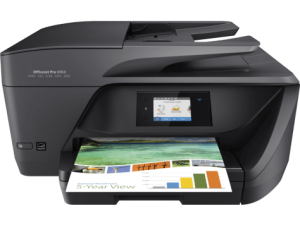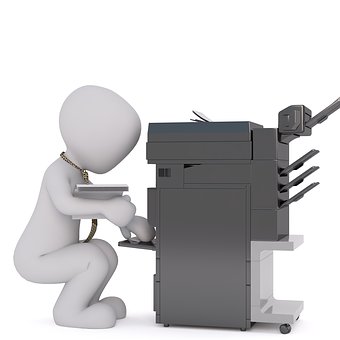Printer Setup
Printing technology has come a long way, evolving from the days of bulky, cable-connected printers to today’s sleek and versatile wireless printing solutions. Whether you’re setting up wireless printer for your home office, upgrading to a more advanced model, or troubleshooting a stubborn issue, the process can sometimes be a puzzle. In this comprehensive blog, we’ll guide you through the intricacies of printer setup, offering step-by-step instructions and expert tips to ensure that you can harness the power of modern printing technology with ease. From connecting your printer to configuring it for wireless use to troubleshooting common problem with printer setup, we’ve got you covered on your journey to hassle-free printing. Let’s dive in and make your printing experience as smooth as possible.
How To Setup Wireless Printer:
Setting up wireless printer can greatly enhance your productivity and convenience, allowing you to print documents and photos from multiple devices without the hassle of connecting cables. Here’s a step-by-step guide to help you set up wireless printer:
-
Check Printer Compatibility
To set up wireless printer, ensure that your wireless printer is compatible with your computer, smartphone, or tablet.
-
Gather Equipment in Printer
You will need your wireless printer, its power cable, a computer or mobile device with Wi-Fi capability, and a stable Wi-Fi network.
-
Printer Network Details
For setting up printer, know your Wi-Fi network’s name (SSID) and password (security key). You’ll need these during the setup process.
-
Unbox and Prepare the Printer
To set up wireless printer, remove all packaging materials from the printer. Place the printer within the Wi-Fi range of your router. Turn on the printer after connecting it to a power source with the provided power cable.
-
Install Ink Cartridges and Paper in Printer
Follow the printer’s instructions to install ink or toner cartridges and load paper into the input tray.
-
Connect Printer to Wi-Fi
Use the printer’s control panel or touchscreen (if available) to navigate to the wireless or network settings. Select “Wireless Setup” or a similar option. Select WiFi network from the list of your WiFi options. Enter your Wi-Fi network’s password when prompted.
-
 Printer driver download
Printer driver downloadOn your computer or mobile device, visit the printer manufacturer’s website or use the provided installation CD (if applicable) to download the printer’s software and drivers. Run the installation following the directions on the screen. It may ask you to select the connection type; choose “Wireless” or “Network.” The software will detect your printer on the network and complete the installation.
-
Test the Printer Connection
For setting up printer, print a test page to make sure that that the printer is properly connected to Wi-Fi network and working.
-
Mobile Device Setup (Optional)
If you want to print from a smartphone or tablet, you may need to install the printer manufacturer’s mobile app. Open the app and follow the instructions to add your printer.
-
Share the Printer (Optional)
If you have multiple devices and want to share the printer, enable printer sharing in your computer’s settings. This will allow other devices on the same network to print to the wireless printer.
You’ve successfully set up a wireless printer, allowing you to print documents & photos wirelessly from your computer and mobile devices. Enjoy the convenience of wireless printing in your home or office.
Common Printer Setup Issues:
Setting up a printer can sometimes be a straightforward process, but it can also come with a range of frustrating issues that may leave you scratching your head. Here are some common printer setup issues that users often encounter:
-
Printer Connection Problems
One of the most frequent issues is trouble connecting the printer to a computer or a network. This might include difficulties in establishing a wired or wireless connection.
-
Printer Driver Installation
Installing the necessary printer drivers and software can be a roadblock for many users. Compatibility issues, outdated drivers, or missing software can all lead to problem with printer setup.
-
Printer Network Configuration
Setting up printer can be especially tricky. Problems with IP addresses, subnet masks, or incorrect network settings can prevent the printer from communicating with your devices.
-
Printer Paper Jams
Paper jams are a common headache. They can occur due to improper paper loading, damaged paper, or issues with the printer’s paper path.
-
Low-Quality Prints in Printer
Sometimes, the printer may produce low-quality prints, with issues like faded text, streaks, or smudges. This could be due to a variety of reasons, including ink or toner problems.
-
 Printer Ink or Toner Cartridge Problems
Printer Ink or Toner Cartridge ProblemsPrinter setup can be disrupted by problems with ink or toner cartridges. These might include improper installation, low ink levels, or expired cartridges.
-
Error Messages in Printer
Printers often display cryptic error messages that can be confusing to users. Deciphering these messages and taking the appropriate action can be a challenge.
-
Printer Software Conflicts
Software conflicts with existing applications or antivirus programs can disrupt printer functionality. These conflicts might cause printing jobs to fail or lead to system crashes.
-
Printer Firmware Updates
Sometimes, the printer may require a firmware update to function correctly. However, performing these updates can be daunting for some users.
-
Physical Damage in Printer
Physical damage to the printer, such as a broken paper tray, damaged cables, or a malfunctioning print head, can hinder the printer setup process.
-
Printer Compatibility Issues
Compatibility issues can arise when trying to connect older printers to newer operating systems or devices.
-
Security Concerns in Printer
Ensuring the security of your printer in a networked environment can be complex. Vulnerabilities may arise if the printer is not properly secured, leading to problem with printer setup.
-
Printer Environmental Factors
Environmental elements such as temperature and humidity can have an impact on printer performance. Extreme conditions may lead to malfunctions.
-
Printer Outdated Technology
Older printers may lack the necessary features and compatibility with modern devices, making it challenging to set them up.
Printer setup issues can range from minor inconveniences to significant roadblocks in your quest to get your printer up and running. These problems can be caused by variety of factors, including connectivity issues, software complications, hardware malfunctions, and environmental factors.
How To Fix Printer Setup Issues:
Setting up printer can sometimes be a challenging task, and issues may arise during the setup process. Here’s a guide to help you troubleshoot and fix common problem with printer setup:
-
Check Physical Connections in Printer
To set up wireless printer, ensure that all cables, including power and USB (if applicable), are securely connected to the printer and computer. For wireless printers, ensure they are connected to Wi-Fi.
-
Power Cycle the Printer
For setting up wireless printer, turn off the printer, unplug it from the power source, and wait for a few minutes. Then, plug it back in and power it on. This can often resolve minor connectivity issues.
-
Verify Printer Compatibility
To set up wireless printer, make sure that your printer is compatible with your operating system. Download the correct drivers and software from the manufacturer’s website for your specific printer model.
-
Reinstall Printer Drivers
If you suspect printer driver issues, uninstall the printer software from your computer and reinstall it using the latest printer drivers from the manufacturer’s website. Follow the installation wizard carefully.

-
Check Network Connection in Wireless Printers
For setting up wireless printer, ensure that the printer is connected to the correct Wi-Fi network. Double-check the SSID and password, and re-enter them if necessary.
-
Printer Firewall & Antivirus Software
Sometimes, firewall or antivirus software can block printer communication. Temporarily disable such software and try setting up printer again. Remember to re-enable it afterward.
-
Restart Your Computer
Sometimes, a simple restart of your computer can resolve connectivity issues and refresh the settings.
-
Clear Print Queue in Printer
If you encounter issues while printing, clear the print queue on your computer. Go to the printer’s properties in your computer’s settings and cancel all pending print jobs.
-
Check Printer for Firmware Updates
Some printers have firmware that can be updated. Check the manufacturer’s website for firmware updates for your printer model and install them if available.
-
Use a Different USB Port (For USB Printers)
If you have a USB-connected printer, try using a different USB port on your computer to rule out a faulty port.
-
Verify Paper and Ink/Toner in Printer
To set up wireless printer, ensure that the printer has enough paper and that the ink or toner cartridges are not empty or expired.
-
Test Printer on Another Device
If possible, try setting up printer on another computer or device to see if the issue is specific to one device.
While setting up printer may occasionally present challenges, troubleshooting, and resolving issues can be a manageable process. By following the steps outlined in this guide and carefully addressing common problems such as connectivity issues, driver conflicts, printer driver download, and software complications, you can often overcome printer setup obstacles.
Conclusion:
In conclusion, mastering printer setup is an essential skill in today’s tech-savvy world. Whether you’re a professional, a student, or simply someone looking to simplify their daily tasks, a well-configured printer can be a valuable asset. Throughout this blog, we’ve explored the nuances of setting up and troubleshooting printers, from the initial physical connections to the intricacies of wireless printing. By following our guidance and troubleshooting tips, you can ensure that your printer operates seamlessly, saving you time and frustration. To know more about our support services, you can visit our website’s Homepage.
